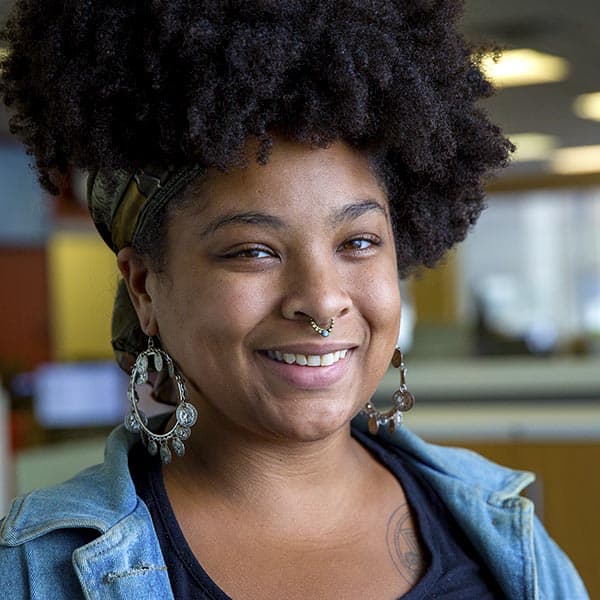Advertisement
This Boston Mushroom Hunter Is Reclaiming The Forest And Teaching Food Autonomy
Resume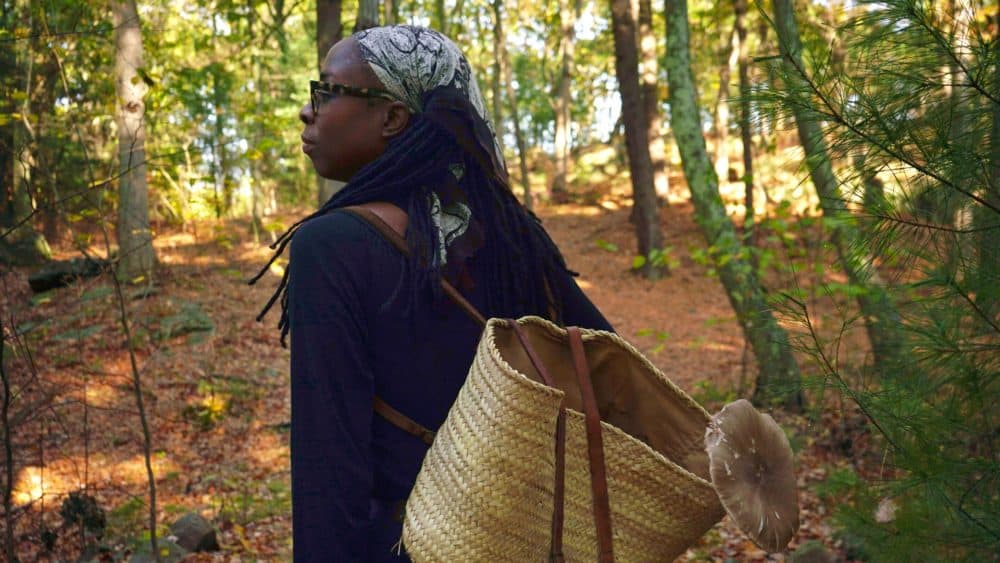
Beneath the fire of late fall red and orange leafy canopies, Maria Pinto keeps her eyes firmly on the ground and on the bases of trees. Equipped with a straw basket and a knife in her hand, she scales the side of a steep hill. A small group of new mushroom foragers, masked and socially distanced, dutifully follow her.
"These are Pleurotus ostreatus or oyster mushrooms," Pinto says. She slides down to a tree and points to a cluster of delicate, umbrella-shaped mushrooms. "These ... they maybe came up over the last couple of days."
Oyster mushrooms are edible (and quite good fried with butter and garlic). In fact, Massachusetts boasts a variety of mushrooms species that you can eat or that possess medicinal properties. Identifying mushrooms can be intimidating, which is probably why most people walk past them without taking a second glance. But Pinto sees the forest with different eyes.
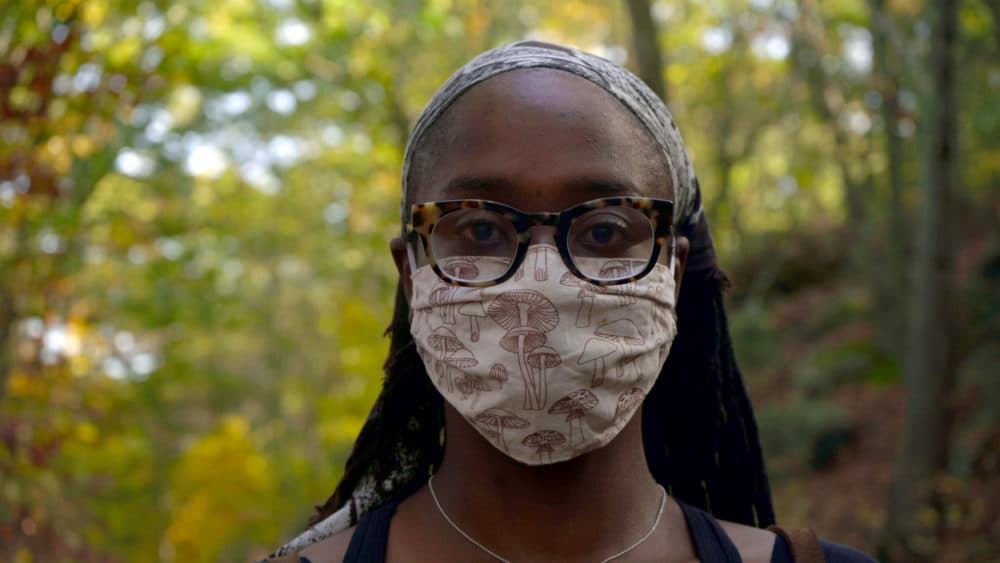
"Once you start learning about what mushrooms and fungus are actually doing, what role they're playing in the lives of a forest," she says, "I don't know anyone who hasn't become just a little bit obsessed with mushrooms." It's the reason why she leads groups of young Black and brown people into the forests of Greater Boston to forage them.
"I want people to feel connected to the land that we're living on," Pinto says. Before the pandemic, she led larger hikes for Black and brown women, some coordinated with community organizations and others with personal friends. Now, group size is restricted, and the cold winter weather will make finding mushrooms more difficult. That won't stop her from spreading her love of mushrooms. "Black and brown people, Black and brown femmes especially, need to get out here and see what the woods have gifted us."
Black and brown people, Black and brown femmes especially, need to get out here and see what the woods have gifted us.
Maria Pinto
On the day of this foraging hike, it's perfect fall weather. Leaves crunch underfoot and the sun makes it easy to spot freshly sprouted mushrooms. They thrive in moist and humid conditions — after heavy rainfall is a good time to look for mushrooms, Pinto says. Soon after spotting the oyster mushrooms, she finds an outcrop of fan-like fungi growing on a dead log. "This is a gilled polypore ... this one looks like it has gills but they're false gills, because mushrooms like to be tricky!"
The world of mycology, or the study of mushrooms, and hunting them can be very tricky. There is no way to definitively say how many mushroom species there are, though many mycologists believe the number to be between 2.2 to 3.8 million species. The sheer number of mushrooms and the fear of accidentally eating a poisonous one is probably what keeps most people from sourcing their own.
When a friend of hers introduced her to mushroom foraging, her obsession took off. "It fascinated me that there is all of this just going on unnoticed and that, you know, just pounds and pounds of food was just going to waste." She began researching, throwing herself headfirst into the world of mycology and spending hours in the woods, looking for and identifying different mushrooms.
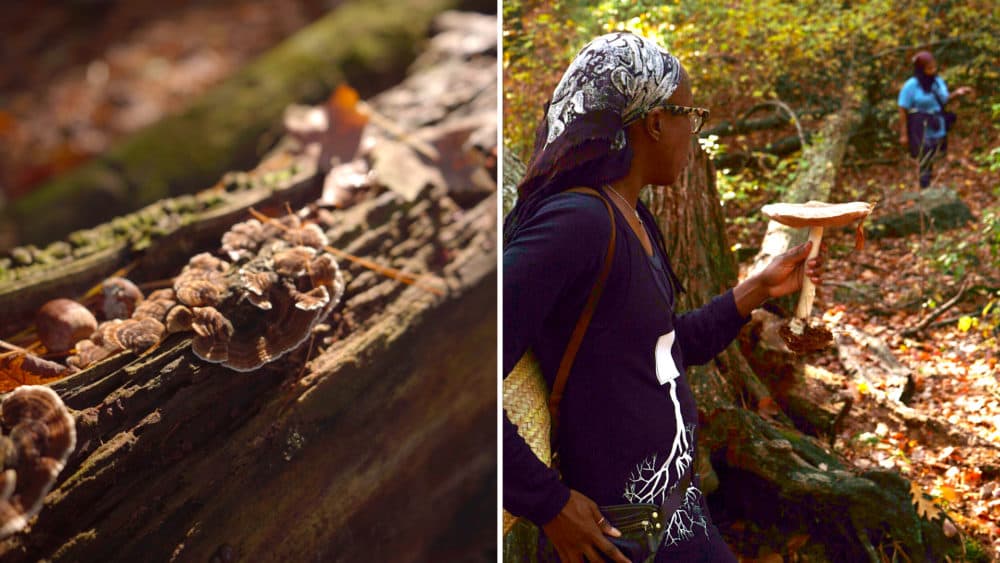
Since her foray into the world of mycology years ago, Pinto has eaten her fair share of mushrooms. Well, more than a fair share. "I think I have had 140-plus wild species of mushroom," she recalls. "I think I'm on the adventurous side of foolhardy, but also I never eat anything that I haven't 100 percent positively ID'ed."
To be clear, you shouldn't just go out to the woods, pick some mushrooms, take them home and cook them. Pinto and other mushroom foragers stress the importance of learning how to identify mushrooms first before harvesting anything for consumption. Identifying mushrooms can be tedious, and as Pinto pointed out earlier, mushrooms can be "tricky." But the payoff is worth it.
"The first time I went to a woods knowing what I wanted to find because I knew that this was the time of year it grew and this was a sort of tree it grew near, it felt like a superpower," Pinto says. In the state, there are a variety of edible mushrooms like "hen of the woods" (Grifola frondosa) and "chicken of the woods" (Laetiporus sulphureus.) Mushrooms with reported medicinal benefits like "turkey tail" (Trametes versicolor ) and reishi also grow in Massachusetts' forests.
While her mushroom foraging abilities may feel like a superpower, Pinto doesn't believe it should. "The ground is giving us this gift all the time," she says. Pinto believes everyone should know about mushrooms and their properties. But the world of mycology can be intimidating. And, well, overwhelmingly dominated by middle-aged white men.
"I think one of the things that held me up from educating myself, and getting into the serious business of mushrooms was just that there was no one who looked like me," Pinto says. She found a few other women of color on mycology message boards and forums and they shared their experiences. "Often it felt like we were being discouraged a little bit on the forums," she recalls. "People were not necessarily taking our [mushroom] IDs seriously, waiting for some white dude to come and ... validate what I had just said."
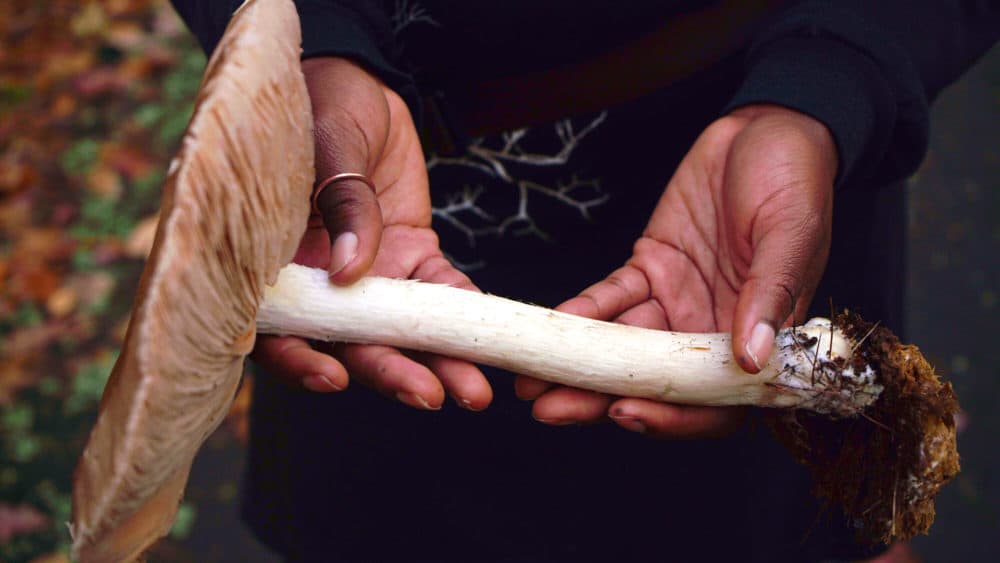
A lack of diversity isn't a problem unique to the field of mycology. Pinto wants to change that. Her goal is to continue to educate others, especially Black and brown women, about the wonderful world of mushrooms. And in many ways, she's already doing so.
Food autonomy, especially in the age of a pandemic, is an increasingly popular topic. In areas like Chicago, food deserts and food inequity became more severe after the COVID-19 outbreak. Terms like "grow your own food," "farming," and "how to farm" have seen an unprecedented spike in Google searches, especially this March, at the beginning of lockdown in the United States. Either out of necessity or a desire for a hobby, people are seeking ways to become more autonomous over their food choices. Pinto believes that mushrooms can provide an answer.
"I feed my entire co-op of Black femmes with the mushrooms that I'm foraging," says Pinto. "And it's a beautiful thing to see them, to see... the dawning realization that this land is ours and we can enjoy its fruits... The food, the medicine. All of this stuff is here for all of us."
This segment aired on November 20, 2020.
